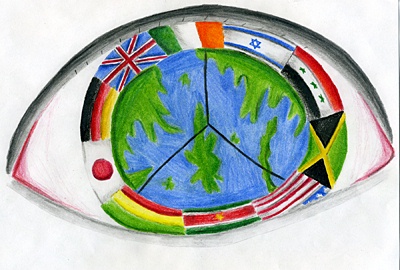All Nonfiction
- Bullying
- Books
- Academic
- Author Interviews
- Celebrity interviews
- College Articles
- College Essays
- Educator of the Year
- Heroes
- Interviews
- Memoir
- Personal Experience
- Sports
- Travel & Culture
All Opinions
- Bullying
- Current Events / Politics
- Discrimination
- Drugs / Alcohol / Smoking
- Entertainment / Celebrities
- Environment
- Love / Relationships
- Movies / Music / TV
- Pop Culture / Trends
- School / College
- Social Issues / Civics
- Spirituality / Religion
- Sports / Hobbies
All Hot Topics
- Bullying
- Community Service
- Environment
- Health
- Letters to the Editor
- Pride & Prejudice
- What Matters
- Back
Summer Guide
- Program Links
- Program Reviews
- Back
College Guide
- College Links
- College Reviews
- College Essays
- College Articles
- Back
Confessions of a Teenage Anthropologist: Gender
Simply put, gender is what is in the head, while sex is what is in the pants.
However, though it has defined people for thousands of years, the concept of gender is still taboo. In westernized cultures, anybody outside the two accepted genders is seen as “unusual” or “strange,” and is often shunned. However, in other cultures, such as that of the Bugis people of Sulawesi, people of the “extra” genders are often accepted and considered special. So, in short, different ideas of gender are actually created by the different cultures. What is accepted depends on the group of people and what they choose to embrace.
The Bugis people of Sulawesi recognize five genders, men, women, calabai, calalai, and the bissu. Bissu, translated into English, is literally “transvestite priest.” They are hermaphrodites that are held in high regard in the Bugis society. The calabai (literally “false female”) are biologically male, but act and dress as women. Calalai (literally “false man”) are biologically women, but as and dress as men. They are like transgender people, but unlike transgender people, they do not formally recognize themselves are either men or women. Therefore, they are given their own special categories of calabai and calalai. According to tradition, all five genders must coexist in order to create harmony and balance in the universe.
The most interesting aspect, however, is not the acceptance of five genders. It is the emphasis on the importance of only one, the bissu. The bissu seem to be “superior” to the other genders because it embodies not only one, but both, genders. They represent a fusion between the male and the female, so they are sacred. In effect, they are put in a high position of power and are often regarded as priests, because they are the connection between the heavens and the man. In fact, they are considered so different from the other four genders that they are only allowed to wear clothing specific to the bissu.
Like the calabai, hijras are biologically male Indians who act femininely, but do not distinguish themselves as either male or female. However, unlike the calabai, hijras are not as warmly and readily accepted in society. In fact, the word hijra is often seen as derogatory. Because of this rejection, many hijras gather in communities and groups led by a leader. Unfortunately, this rejection also prevents many hijras from successfully finding legitimate work, so many end up on the streets, prostituting themselves. Also, hijras are not formally recognized by law, so they lack many rights, such as voting and formal marriage.
Yet, many chose to live this way. Hijras, generally, believe in two gods, Lord Shiva and Bahuchara Mata. Both these gods are male, but had descended onto earth in the form of women in order to seek revenge and help a human, respectively. Every year, hijras celebrate an eighteen- day religious festival, during which each hijra ceremonially marries the god, Aravan (according to tradition, no woman would marry him, so Krishna, a god, descends as a woman, and marries him). Subsequently, they mourn Aravan’s death, change into white saris, tear the flowers from their hair, and break their glass bangles.
Like food, clothing, and marriage, the definition of gender depends on the different cultures and what each acknowledges as being acceptable. The western ideas pertaining to gender are too narrow- minded. Because of the “two- gender model” that many were raised to learn and accept, it is difficult for many westerners to understand people of genders outside the usual male and female. Anything that seems even mildly unusual is often quickly rejected. But, like many things, but is seen as the norm must be seen as normal to a large group of people, not just an individual.

Similar Articles
JOIN THE DISCUSSION
This article has 0 comments.